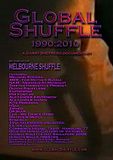I think this has a lot to do with the perceived values, or if you like authenticities of the three corners of the triangle. Personal or artistic authenticity is key to the arty-pop corner. Cultural authenticity is what defines folky-pop (in whatever sense you put into the word, I personally don't see traditionalism as part of it for instance). And I guess a kind of populist authenticity defines the commercial pop corner - if people are buying it, who are you to say it's bad?
 These kinds of values are very common in music discourse, the first since the early romantic period, the second since national romanticism and the third more recently. Although it's often not explicitly said, I think these valuations underlie a lot of the theories about popular music, concious and unconcious. The standard "music journalist consensus" for example definitely likes arty-pop, has an ambivalent relationship to folky-pop and hates commercial pop. (Remarkably similar to the romantic aesthetic that still permeates classical music, by the way, but on a smaller scale.)
These kinds of values are very common in music discourse, the first since the early romantic period, the second since national romanticism and the third more recently. Although it's often not explicitly said, I think these valuations underlie a lot of the theories about popular music, concious and unconcious. The standard "music journalist consensus" for example definitely likes arty-pop, has an ambivalent relationship to folky-pop and hates commercial pop. (Remarkably similar to the romantic aesthetic that still permeates classical music, by the way, but on a smaller scale.)For this post I'm singling out two well-known theories of popular music and one less-known, all of which posit a dichotomy but that I nevertheless think make sense graphing on the triangle.
First up is Critical Theory. Although granddaddy Adorno himself hated all popular music, even the pretentious stuff, some later critical theorists have accepted the arty end as having "truth content", freedom and creativity. Critical theory also makes the not-that-startling claim that the commercial pop corner of music is manipulating the populace into docile servility to the capitalist system.
However, the interesting point the theory makes (as made apparent using the triangle) is that the variety offered by the seemingly self-created and self-maintained folky-pop corner is in fact only "pseudo-individuality". Its pleasures are easy and escapist and serve exactly the same purpose as commercial pop, to distract from the economic hardship of the people.
 So what the theory does is basically actively define away one of the corners of the triangle. Our second theory, Cultural Studies, arose at least partly in response to this curtailing - one definitely gets the sense that a basic desire there is to re-appraise the self-created culture of the working class. Cultural Studies concedes the idea of a culture industry creating according to a capitalist agenda, but its central theory is on the reception end. Some people do fall for the hegemony, but a lot of them "negotiate" the culture for their own ends and the media is a battleground rather than purely hegemonical. This focus on (essentially working class) reception means Cultural Studies hardly ever deals with the arty stuff. It's basically outside the theory (or can be constituted as belonging to either side).
So what the theory does is basically actively define away one of the corners of the triangle. Our second theory, Cultural Studies, arose at least partly in response to this curtailing - one definitely gets the sense that a basic desire there is to re-appraise the self-created culture of the working class. Cultural Studies concedes the idea of a culture industry creating according to a capitalist agenda, but its central theory is on the reception end. Some people do fall for the hegemony, but a lot of them "negotiate" the culture for their own ends and the media is a battleground rather than purely hegemonical. This focus on (essentially working class) reception means Cultural Studies hardly ever deals with the arty stuff. It's basically outside the theory (or can be constituted as belonging to either side).
A third fascinating theory, though I guess less academic, is the one presented by Martha Bayles in her book Hole in Our Soul. Her basic contention is that the real, popular, civilized music (very obviously her imagining of the folky-pop) has been destroyed by what she calls "perverse modernism", the desire to shock (which she traces from futurism to 2 Live Crew). This is interesting because not only is the bunt of the argument directed against arty-pop, but on closer reading she actually includes commercial pop in this category as well! How's that for a different perspective on the triangle?
 So as a thought experiment the triangle is not a bad one. It's limited in that it does not differentiate between different conceptions of the same corners - for instance you can have two or more competing types of cultural authenticity that would be in conflict with each other without it becoming apparent on the triangle.
So as a thought experiment the triangle is not a bad one. It's limited in that it does not differentiate between different conceptions of the same corners - for instance you can have two or more competing types of cultural authenticity that would be in conflict with each other without it becoming apparent on the triangle.But enough with the triangle already. A futher discussion on the musical characteristics of the three corners will appear under the heading "Genre of the Week: Pop, part 2" in due course.










































No comments:
Post a Comment